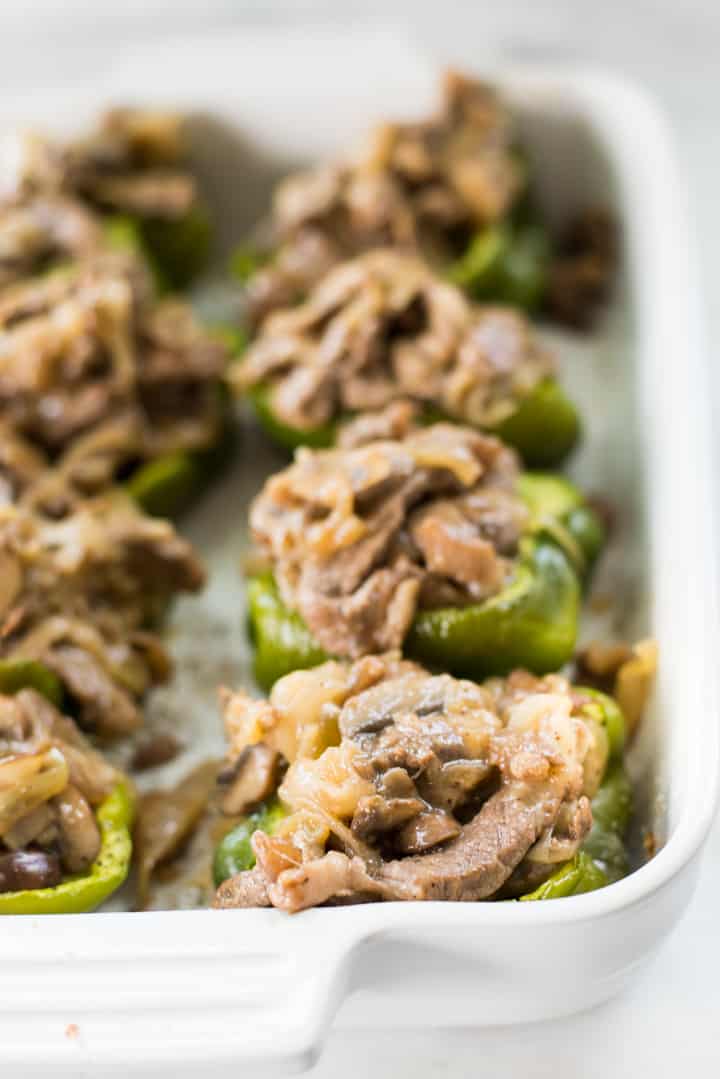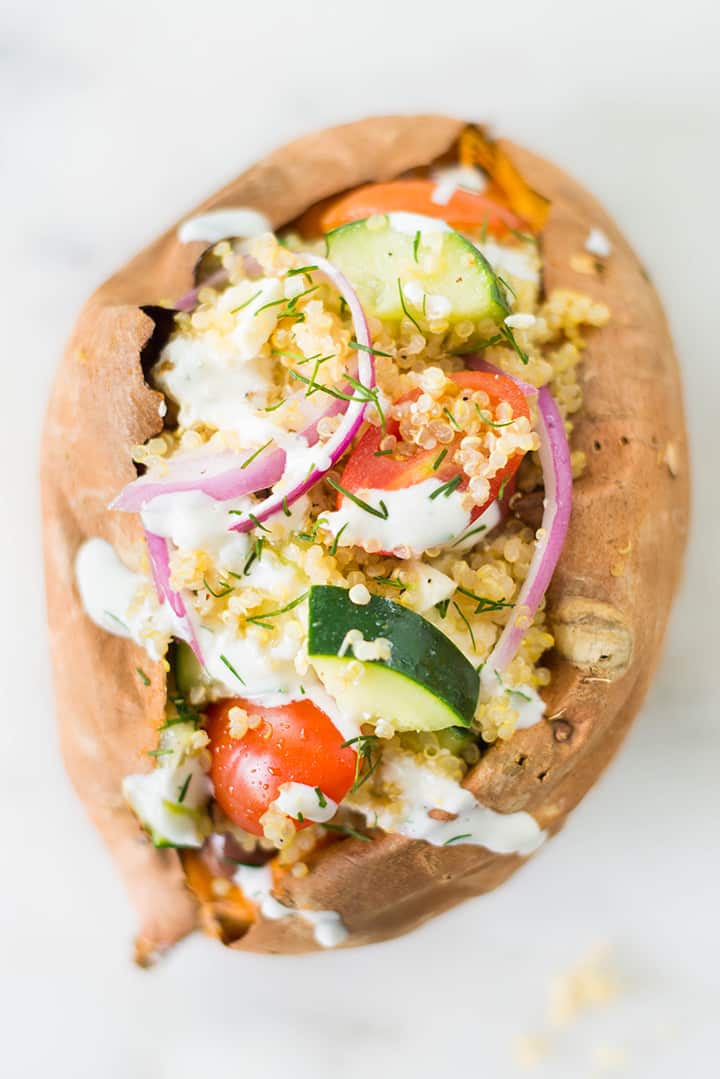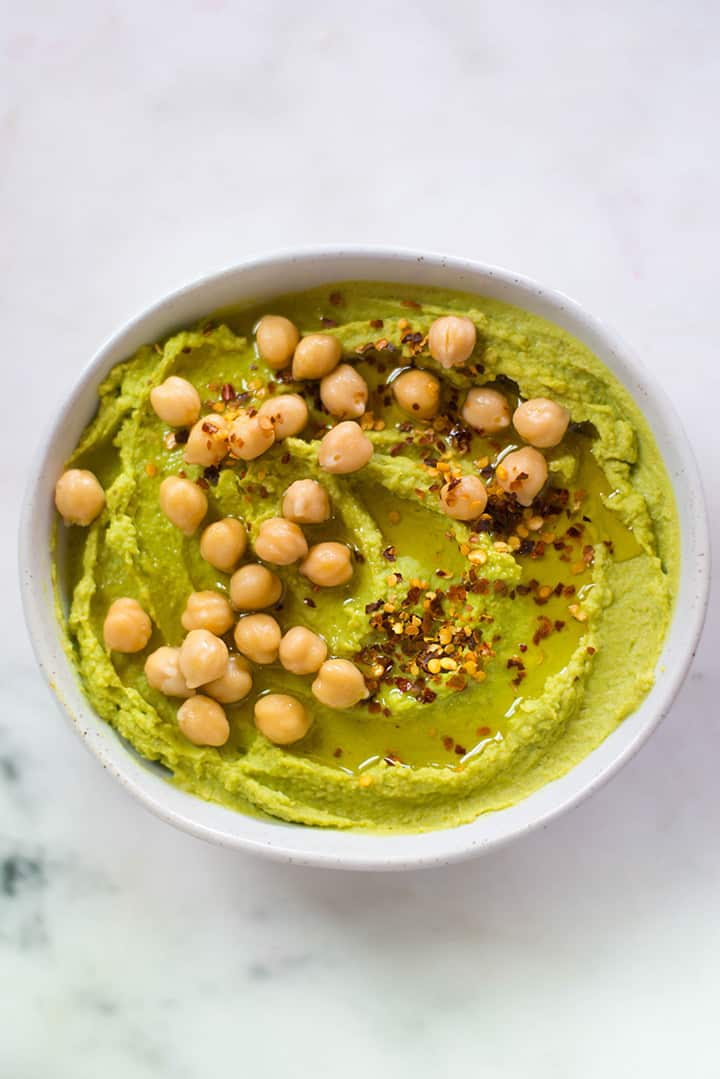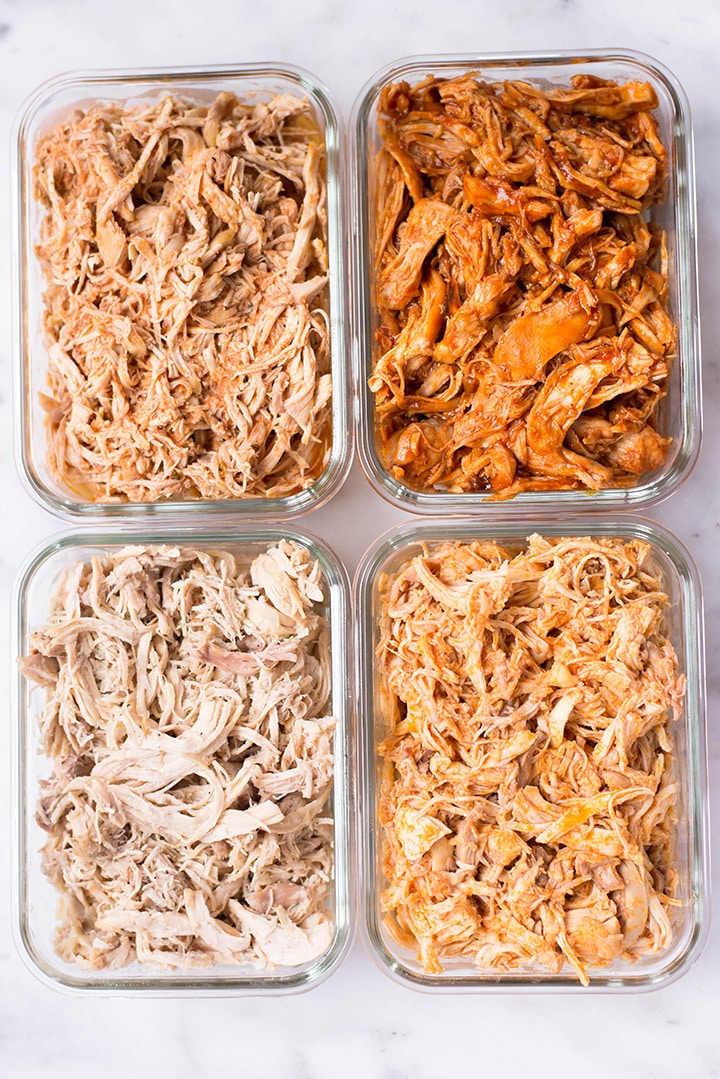Are you looking to lose weight, gain weight, or maintain the weight you are at right now? Learning how to calculate your macros can help you reach your goals. This guide will explain what macros are all about and help you easily calculate them yourself.
Calories are the fuel that feeds your body. And what you eat is just as important as how much you eat.
To explain that familiar, but powerful statement a little better, let’s talk about macros.
Friends, I know – many of us hear the topic "calculating macros," and want to stop reading right there and run the other way. But please don’t! Stick with me in this post, and I'll hopefully make it much simpler for you to understand.
It’s really not that complicated, and knowing your macros can make things that much easier for you when it comes to being at a weight that makes you feel healthy and energetic.
I used to have a problem with my weight going up and down, as you know, and it was becoming a pretty stressful thing for me.
But then, when I got into my healthy lifestyle, my curiosity was piqued for all things healthy. I learned all about clean-eating, using exercise to make myself stronger, and yes, using macros to my advantage. It's been a great move for me and so helpful in my journey to a healthier me.
So, since I get a LOT of questions from you guys about how a healthy lifestyle can work for you and make you feel awesome, I decided to explain macronutrients.
You can make calculating your macros work for you.
WHAT ARE CALORIES?
Calories are the energy your body needs to keep it going each day. Often, we count calories as a way to lose weight. We think calories in and calories out. Specifically, we say a reduction in calories works to help us lose weight.
Just counting (and often depriving ourselves) of calories can get tiresome pretty quickly. Even when goals are met, they are hard to maintain because of the work it takes to calculate your calorie intake every day.
Not only that, but it is also possible to keep to your calorie count without watching what you are eating. Some people will cut down on their meals just to be able to indulge in chocolate chip cookies, all the while eating only the number of calories allowed for the day.
But they are not eating healthily. Knowing your macros helps you to do that, which is what I talk about in 30 Day Healthy as well.

WHAT ARE MACROS?
Macros are the basis for the calories you eat every day. The word macros is an abbreviation for macronutrients. To make it simple and less overwhelming, your macros are based on:
- Carbs: Carbs fuel energy and 1 gram is equal to 4 calories
- Protein: Proteins build and repair muscle, and 1 gram is equal to 4 calories
- Fat: Fat keeps you satiated, and 1 gram is equal to 9 calories
To convert grams to calories, you multiply the number of grams by the calorie value.
- 9 grams of carbs would be 36 calories (9 grams x 4 calories = 36)
- 9 grams of protein would be 36 calories (9 grams x 4 calories = 36)
- 9 grams of fat would be 81 calories (9 grams x 9 calories = 81)
But, we don’t want to worry about counting calories for that matter. It’s all about the macros!
So, when we calculate macros instead, you are ensuring that what you eat is just as important as how much. When you count macros, you are counting nutrient-dense food (carbs, protein, and healthy fats) as opposed to limiting your calorie intake, but potentially eating the wrong thing.
I can tell you that both counting calories and macros (but especially calculating my macros) has helped me reach my weight goals, and is now helping me maintain them. I also use macros calculations as a way to build muscle.
You see, your macros calculation can be tweaked depending on what you want the end result to be. I keep my protein intake high (to the tune of 39%) because I want to lose fat and gain muscle.
A person with a different objective, say to lose fat, would target 35% carbs, 30% fat, and 35% protein. Someone on a keto diet would aim for more fat and fewer carbs. An endurance athlete would aim for more carbs because they need the fuel to keep them moving.
Calculating your macros is tied into three things: your lifestyle, your health, and your individual metabolic rate. We’ll look at how these link to your macros when we discuss the calculation method.
So, let’s look at how you calculate your macros.

HOW TO CALCULATE YOUR MACROS
The equation to calculate your macros is pretty straightforward once you break it down. Here we go:
1. Start with your TDEE (Total Daily Energy Expenditure)
To figure out your TDEE, we use the Mifflin St. Jeor formula. It’s one of the most popular and respected ways to figure out how much energy it takes to fuel your body without movement.
This calculation method was devised to determine your average expenditure requirements when at complete rest (REE). This means how much energy is needed when you are having a quiet, restful day. The REE, in combination with your normal activity level, gives you your TDEE.
Note: The REE is also described by some as the BMR or Basal Metabolic Rate. It is the rate for simple bodily tasks that take place every day, even when at rest, like pumping your blood to your heart and maintaining your body heat. Based on your height, weight, and age, your BMR determines your body’s energy needs.
So, to figure out the BMR, or REE, take this formula.
For men: 10 x weight (kg) + 6.25 x height (cm) - 5 x age + 5 = Resting Energy Expenditure (REE) or Basal Metabolic Rate (BMR)
For women: 10 x weight (kg) + 6.25 x height (cm) - 5 x age - 161 = REE or BMR
2. Take into account your normal activity level
Because everyone moves every day, we then calculate your movement, which is your TDEE.
This is where the lifestyle I mentioned earlier comes in:
- Sedentary: x 1.2 (limited exercise)
- Lightly active: x 1.375 (light exercise less than three days per week)
- Moderately active: x 1.55 (moderate exercise most days of the week)
- Very active: x 1.725 (hard exercise every day)
- Extra active: x 1.9 (strenuous exercise two or more times per day)
If this is getting too intimidating, that's okay, too. Come join 30 Day Healthy and choose the upgrade to have your macros calculated for you by me 🙂
Here is a sample equation to get you to your TDEE. We take the BMR (REE), which is your age, gender, height, and weight. Then we add the exercise output, and you are done. It’s that simple!
Take a look:
This is based on a 40-year-old woman who weighs 135 pounds. She’s 5' 5” and is moderately active.
10 x weight (kg) + 6.25 x height (cm) - 5 x age - 161 = BMR
Then:
BMR x 1.55 (moderate activity level) = TDEE
So, to figure out the whole equation, here we go:
10 x 61 + 6.25 x 165 - 5 x 40 - 161 = BMR
610 + 1031 - 200 - 161 = 1280
1280 x 1.55 = 1984 (This is a moderate TDEE)
A 40-year-old moderately active woman who weighs 155 pounds and is 5 foot, 5 inches tall has a TDEE of 1984.
To lose weight, she’ll reduce her calories from 1984, say by 200-400 per day. To maintain her weight, she’ll stay at the same calorie count. To gain weight, add 200-400 or more calories a day.
There will be exceptions to the formula with people that are obese (the results may vary due to body fat percentage and the fact that fat tissue requires little energy to maintain itself). The same goes for lean mass, which burns more calories at rest than the average person.
But where do the macros come in?

HOW TO CALCULATE YOUR MACROS
Now that we have the daily recommended amount of calories explained, where do we go from here? It’s on to the macronutrients, my friends!
It’s going to depend on your goals. Do you want to gain weight? Do you hope to change your physique into one with more muscle mass? Determine your goals first.
The general consensus for the macros ratio is as follows:
- 45-65% carbs
- 20-35% fat
- 10-35% protein
Personally, I take in a high percentage of protein, and that is because I am working to lose fat and gain muscle. I average 39% protein daily. But remember, I am combining this with a weight training program, which is also key to building muscle mass.
Your specific needs and goals have to be taken into account. Someone following the Keto Diet, for example, may eat as much as 60-75% of their daily calorie intake from fat. Healthy fats, mind you, like avocados and olive oil.
Vegans may see a ratio of 25-30% protein, 40-45% carbs, and 30-35% fat works for them. Of course, they will tweak the percentages, depending on whether they want to lose, maintain, or gain weight.
I think this is a simple way of looking at the macro picture, based on goals. If you are looking for endurance as you build up to a competition or race, your macros could look like this:
- 2500 calories
- 40-50% carbs
- 20-30% fat
- 15-20% protein
For someone on a moderate strength training program looking to maintain weight:
- 2100 calories
- 50% carbs
- 20% fat
- 30% protein
And for weight loss:
- 1500 calories
- 30% carbs
- 25% fat
- 45% protein

ADJUSTING YOUR MACROS
Now that you know how to calculate your macros, you can adjust them according to your goals, how you feel, and the results you are seeing.
I know that you don’t want to count calories every day. And that is where calculating your macros comes in. Keep track of your macros for the first week. See how you feel in regards to bloating, inflammation, energy, and so on.
Then tweak the macros just a little bit if you need to, based on how you feel. Did your weight change at all? How about your energy level – did you have more energy?
Working with your macros is a changing process as you change in body composition and overall well being. Don’t be afraid to adjust your macros.
MACRO #1: CARBS
The carbs you eat are your main source of energy and fuel. Don’t cut back drastically all at once, or you may send your cravings through the roof. The key is to keep the carbohydrates you consume healthy ones.
Typically, the carbs we like to eat are not always the healthiest. Your body makes glucose out of the carbs, and our systems love carbs because of that. Then, our bodies can work adequately to provide fuel.
Remember, carbs have fiber, too. Fiber is crucial to a healthy digestive system. So, don’t be afraid of carbs. Just eat the ones that will serve you best. The ideal choices are foods like this:
- Fruits like apples, bananas, and strawberries
- Vegetables like sweet potatoes, pumpkin, and broccoli
- Beans
- Legumes
- Grains like brown rice, oats, and quinoa
MACRO #2: PROTEIN
Proteins are called the building blocks of health – I am sure you’ve heard of the term. When you exercise, it’s the protein that repairs your tired and used muscles. The term is also a suitable one because protein is needed in consistent supply. The body does not store it, you see, like it does carbs and fat. Protein builds and repairs. It is essential to healthy organs, skin, hair, muscles, and more. What types of proteins to eat? Include eggs on your protein list as eggs are very beneficial. As well, add these to your grocery cart:
- Lean beef
- Poultry like chicken and turkey
- Lean pork
- Tofu
- Nuts like almonds and walnuts
- Full-fat dairy like cottage cheese and plain Greek yogurt
MACRO #3: FAT
Good-for-you fats are an essential part of a healthy diet. Fats also work to keep us satiated, and including them in your daily food intake will help you feel full. This prevents snacking throughout the day on less-than-healthy foods. As well, too little fat can affect our hormones in the wrong way. Keeping every macro at a reasonable level is a must, and fat is no exception. What fats are best?
- Fatty fish, like salmon and tuna
- Nuts and nut butters
- Seeds like pumpkin seeds and chia seeds
- Olive oil
- Avocados
- Cheese

TIPS FOR MAKING YOUR MACROS MANAGEMENT WORK FOR YOU
Besides counting calories and managing your macros, there are other things to be aware of that can make reaching your goals of weight gain, weight loss, or weight maintenance attainable.
- A very important tip is to never grocery shop when you are hungry. Even shopping when you are tired can be a disaster because you will grab whatever you see, not necessarily the best foods.
- Have 3 “go-to” meals as backup for the days you don’t feel like recalculating your macros if need be, or even thinking about them. If your head just isn’t there, stick too that tried and true meal plan for the day, and you’ll be all set.
- Don’t graze throughout the day. Sure, a healthy snack is okay between meals, but in general, sit at the table to eat and don’t eat otherwise. For example, eating at your desk when you are working is not a good idea. You often don’t realize how much you are consuming or appreciate the process, either.
- Have a favorite meal that is easily changeable. A wrap is a good example. If you need to up the fat for your macros, add lots of avocado. Need more protein instead? Add extra slices of nitrate-free turkey.
- Drink lots of water! I always drink half of my weight in ounces of water each day.
- Try to evenly distribute your macros at each meal. You’ll feel better with the consistency as opposed to eating a lot of fat at one sitting, carbs at another, and a ton of protein at another meal.
- If you have treats that you indulge in now and then, buy them in smaller sizes.
- What you want to do is eat foods that will fill you up. You don’t want to waste your macros on foods that don’t satisfy or leave you hungry. You’ll only overindulge if you don’t eat well.
THE BIG MACROS PICTURE
To finish, I just want to say that working with your macros instead of counting calories is a lot easier.
But first, let’s mention calories one more time. I can’t emphasize enough that what you eat is so important. What I mean is, the 35 calories that you get from a super healthy serving of broccoli, that is full of vitamins, protein, and fiber will serve your body well. A 100 calorie donut will lift you up for a few minutes, but afterward, it will cause a crash and energy slump that can knock you down for hours.
So, you’ve got the freedom to eat based on the 3 foods that make up your macros: carbs, proteins, and fats. We’ve discussed what the best foods are, and we’ve talked about macro ratios and what can work the best for your goals.
But the big takeaway should be that you concentrate on feeling your best and follow a clean-eating lifestyle for optimal well being. And, one more super-essential point – don’t forget that exercise should be a part of your macro equation.
Strength training (weight lifting in particular) is a great way to lose body fat. You will build muscle and increase your fat burning capacity. Exercise, like riding a bike or going for a brisk walk is great, too.
If you are looking for help or a little jump start on your journey, check out my weight loss program 30 Day Healthy. I answer lots of questions about eating clean and following a healthy lifestyle. Combine healthy eating and exercise with following a macro plan, and you’ll soon see the results!



Rebecca
I have under active thyroid am menopausal.
I have tried fasting, eating more protein less fat, exercising and weights.. nothing can shift all my wobbly fat.
I am now considering surgery to remove 5 spare tyres round my middle.
The worst thing about it is i hardly eat anything so dont understand why im so fat.
Dustin
I'm so sorry you're struggling. I'm betting your body is reacting to the low number of total calories you're eating, though it's hard to know for sure, given that there's a ton of other information I would need to know to help you best. Have you tried calculating your macros to understand what you should eat to reach your goals? If not, I suggest starting there and then adding in exercise and daily movement, along with consistent nutrition. I wish you the best!
Mark Smith
Carbs: Carbs fuel energy and 1 gram is equal to 4 calories
Protein: Proteins build and repair muscle, and 1 gram is equal to 4 calories
Fat: Fat keeps you satiated, and 1 gram is equal to 9 calories.
That is how food calorie calculation is done anyway- real calculation is impossible- you need a biochemical analysis or a pot burning test.
Cindy Ledezma
Hi Lacey
I've been watching you videos, and as much as I try to understand the whole Macro thing, I find it very had to understand . I will be a beginner at this and need help on this new journey- will you please help. I would like to know after calculating my Macros and TDEE how to I encorporate these together to begin my day w/ foods, or do i even need TDEE ? can I just go off of Mcros ?
My Info.
age-38/ height-5'2/ weight-147, i work out at least 4-5 x a week, love to lift weight vs cardio and also do daily ab workouts
This is what the online calculator says my Macros are: Prot-100/ carb-220/ fat-47
TDEE = 2416- Are any of these numbers correct ?